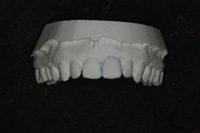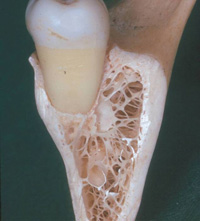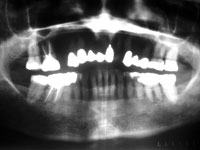Think you’ve seen and heard it all when it comes to the “issues” of running a practice? Think again. The McKenzie Company’s recent survey of 35,000 dentists across the country reveals that they are dealing with some of the most vexing management concerns yet, from 85% overhead, to employees who would rather glaze over at the computer than greet patients, to staff attitudes that would shock the Osbournes. Rest assured that the standard practice challenges aren’t waning either: too little time, too many patients, too many holes in the schedule, and too little profits.
First the good news: You and your colleagues, by and large, love dentistry and are eagerly working to provide the very best care for patients. Many, in spite of numerous challenges, are securing healthy profits, and some are even breaking the million-dollar barrier. Virtually every responding dentist is completely committed to doing what he or she can-including bringing in outside assistance-to build his or her ideal practice, but nearly all have major issues to tackle, starting with the team.
THE “STUFF” OF STAFF
 |
|
Photograph by Nathan Zak |
And is there ever a lot of “stuff.” It is clear that staffing issues are a major source of concern for dental practices throughout the country. More and more dentists are being forced into damage-control mode rather than production mode. In some cases, employees are literally throwing temper tantrums or are simply flat-out refusing when told to change their ways of doing things.
Practices report that some team members who should be actively supporting the doctors are questioning their diagnostic skills. They are refusing to provide basic customer service, and still more are routinely embarrassing the practice in front of patients. While the doctor busily presents quality treatment plans to patients, staff members chat in the halls about her tendencies to “overdiagnose” or his “preoccupation with making money.” Meanwhile, there are long-timers out there who are so convinced that their “institutional knowledge” has rendered them untouchable, they make the words “poor attitude” sound like a compliment.
At the same time, employees are demanding more money but balk at suggestions to improve practice revenue. Talk about swimming upstream! Is it any wonder that overhead is another serious worry for many practices?
This is not to suggest that all dental teams are overwhelmingly difficult, but the reality is that every practice encounters staffing problems, and those responding to our survey indicate it is a major issue for them.
WHERE TO BEGIN?
Start at square one. The best way to deal with problem employees is never to let them in the door. Often dentists will hire the first person who responds to an ad. They’ll hire the one who appears to be the most personable. They’ll pick the applicant who “just seemed right” for the office. Six weeks later they are dealing with Nightmare on My Street. Before you find yourself in a test of wills with Freddy Krueger, take a few deliberate steps in your hiring process.
First, assess and adjust. Are the systems breaking down? How are collections and scheduling functioning? Rather than throwing a new employee at poorly designed and ineffective systems, take this opportunity to update procedures. Then train or have the new employee trained to implement a workable and effective system.
Second, update or write a job description. It should be tailored to attract the employee you need. Include the job title, job summary, and specific duties. This clarifies what skills the applicant must possess and explains what duties he or she would perform.
Third, advertise what you have to offer. The team member you are looking for is successfully employed but glancing through the ads to see what’s out there. What do you have to offer that your ideal employee wants? Excellent salary and benefits, a positive working environment? Sell the position. Tell the reader what’s in it for them.
Fourth, read resumes carefully. Highlight those qualities that match the position requirements. Look for longevity in employment, and be wary of applicants who only reference years to describe how long they worked at a particular location. For example, 2002-2003 could mean December 2002 to January 2003. And a sloppy cover letter indicates that the applicant may have poor attention to detail. Mark resumes with “yes,” “no,” or “maybe.” The “yes” candidates are the first to be considered.
Fifth, prescreen applicants over the phone. If there are gaps in employment history, now is the time to find out why. Determine what salary range the applicant expects and if he or she has a list of must-haves for the position. Listen for tone, attitude, and grammar, particularly if the position requires handling patient calls.
Sixth, refer to the references. Never hire any employee, even if it’s your mother, without checking references. This step will save you from multiple hiring horrors.
Seventh, if you don’t ask, they won’t tell. Conduct interviews using a written set of standard questions for each applicant so you can compare responses to the same questions. Ask follow-up questions based on the applicant’s responses, and listen carefully. Gather facts that can be verified. Candidates are likely to be on their best behavior in the interview. If they don’t impress you now, it will likely only get worse after they are hired.
MEASURE, AND YOU WON’T HAVE TO CUT
Once employees are in the door, they are accountable. No exceptions. Spell out the employee’s individual responsibilities and your specific expectations in black and white. Explain how those responsibilities fit into the overall practice goals so that the employee has some understanding of the big picture. If your newly designated scheduling coordinator comprehends why it is imperative that the hygienist be scheduled to meet daily production goals, then she can better appreciate the value of her contribution to your team.
In addition, establish individual performance goals for every employee. These should complement practice goals such as increasing collection ratio, reducing accounts receivable, improving treatment acceptance, and maximizing the hygiene schedule.
Institute a process for measuring results. For example, if you expect collections to improve, help staff members develop a strategy to achieve a specific collection rate, such as 98%. Provide them with the tools to succeed, including collections training if necessary, and each month during the staff meeting give them the opportunity to report on the progress of the new system. When staff members are trained and held responsible, they take ownership, and there is nothing like accountability to motivate a team.
What doesn’t get measured doesn’t get done. Plain and simple. If you want quality staff members, then establish quality expectations, train them, and remind yourself daily that you are the one bringing home the bacon in this operation. If anyone’s going to slaughter, it’s not going to be you.
HIGH OVERHEAD? LOOK FIRST TO HYGIENE
High overhead is dogging many dental practices. Some report that it is consuming 70% to 85% of practice revenues. Hello, mission control? There is definitely a problem here. And it is often, although not always, rooted in an underproducing hygiene department.
Hygiene production that waxes and wanes translates into smaller raises, lower bonuses, fewer new technologies, and yes, potentially exorbitant overhead. Get the most out of your hygiene production the same way you will get the most out of all your other systems, by measuring outcomes and insisting on accountability. Take these steps and build a hygiene department that is pulling its weight rather than pulling you under:
(1) If the hygienists receive guaranteed salaries regardless of their production, the expectation must be that they produce 3 times their salaries.
(2) In addition to a base salary, consider paying hygienists a commission for achieving additional production.
(3) Evaluate fees and determine if they are too low. Look at the procedures conducted in an hour to determine the production-per-hour costs. If the hygienist is paid $25 per hour, and the cost for the prophy, not including the dentist’s exam, is $50, the hygienist is making 50 cents on the dollar.
(4) The hygiene department’s salary should be less than 33% of its production, not including the doctor’s exam fee.
(5) Insist on periodontal assessment. One-third of hygiene production should be in interceptive periodontal therapy. Require the hygienist to measure the total number of dollars produced in the 4,000 code and divide it by the hygiene department’s total production.
(6) Review hygiene production each month during the team’s monthly meeting.
(7) Customize the time per patient based on patient need, not on a standard, one-hour allocation for each patient.
(8) Provide hygiene hours in the evening if patients are requesting late appointments.
CONCLUSION
In our day-to-day conversations with dentists, many of them share similar obstacles. The challenge, however, is determining to what degree those barriers are holding the individual practices back. While certain systems can and should be implemented in every practice, one office will require a more aggressive collections system, while another down the street will need a more comprehensive patient retention effort.
The challenge lies in the individual practice’s ability to determine clearly which systems need the greatest attention. Often, dentists are too overwhelmed by the resulting frustrations of poor systems and ineffective staffing to identify the solutions. But when they decide to take action and are willing to implement the necessary steps to achieve their goals, they are consistently astounded by the results. It all begins with acknowledging there are problems and recognizing that they can be solved.
Ms. McKenzie, certified management consultant, is a nationally known lecturer, author, and consultant to the Council on Dental Practice of the ADA. She is CEO of The McKenzie Company, which has provided success-proven management systems to dentistry since 1980 and offers a full line of educational management products at mckenziemgmt.com. She is founder of The Center for Dental Career Development, which provides ad-vanced education to the dental profession online at dentalcareerdevelop.com or in La Jolla, Calif. To receive Sally McKenzie’s Weekly e-Management newsletter, which provides targeted management tips, call (877) 777-6151, or e-mail sallymck@mckenziemgmt.com.











